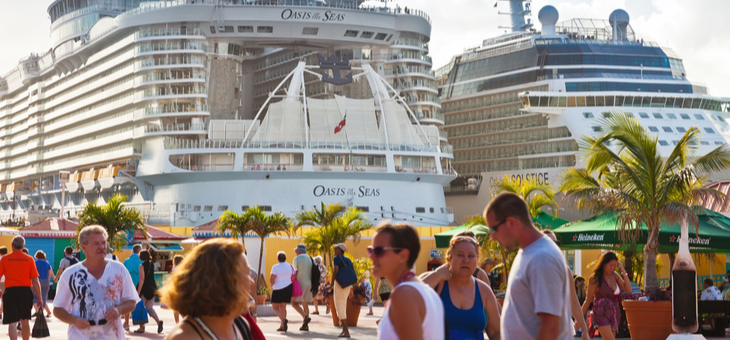Australians are among the biggest cruising fanatics in the world. So, when it comes to changes in the industry, our sizable cruise loving community wait with bated breath.
Before we get into the transformations which we can expect in the year ahead, let’s take a moment to appreciate just how colossal this industry is. Cruise Lines International Association (CLIA), the global cruise industry peak body, has released some conclusive data in the 2020 State of the Cruise Industry Outlook report. Globally, the cruising industry paid $50.24 billion dollars in wages to a whopping 1,177,000 employees and produced $150 billion dollars in global output.
Environmental sustainability
The report has highlighted the industry’s commitment to “responsible tourism practices”. What does this entail? Well, the according to the report, this includes a commitment to environmental sustainability, within the industry and through partnerships with local governments. And this doesn’t seem to be a throw away comment either, with the industry investing $22 billion dollars into developing energy efficient technologies to help achieve their goal of reducing carbon emissions by 40 per cent within the next decade.
Some changes to achieve this goal include the use to Liquified Natural Gas, Exhaust Gas Cleaning Systems, Advanced Wastewater Treatment Systems, Shore-side Power and improvements in recycling, energy efficiency, solar energy and a reduction in plastic waste.
Destination stewardship
Many of us have seen the stereotypical western tourist pulling into port, snapping some photos, harassing locals then sailing away after having trashed the beach. Well, the industry appears to be well aware of this and is going overboard to work alongside local communities by staggering the arrival and departure of ships and diversifying shore excursion offerings as well as where passenger money goes.
Positive outlook
Around 66 per cent of gen X and 71 per cent of millennials have a more positive attitude towards the cruising industry as opposed to two years ago. This suggests that the market and culture around cruising may begin gearing towards younger passengers.
Staying nearby
More than six in 10 cruise passengers spend an extra few days at cruise ports either before departure or after debarkation. This gives tourists the chance to settle down and experience the destinations rather than rush through it, and it great for local economies. Expect to see more of this in the year ahead.
Sailing solo
Solo cruising is on the rise. This means cruise lines will be providing more single-friendly activities, solo-lounges, studio cabins and hangouts for this growing demographic, as well as waiving singles’ supplements and offering better fares for solo cruisers.
Tiny trips
For travellers who only want a micro break from the daily grind, more cruise lines are offering mini getaways in the form of three-to-five-day cruises. If you want to sample cruising without the commitment or can only afford to duck away for a little bit, these new short trips are for you.
Are you a regular cruiser? What changes would you like to see happen in the cruise industry.
If you enjoy our content, don’t keep it to yourself. Share our free eNews with your friends and encourage them to sign up.
Related articles:
Cruise ship squeezes in narrow canal
Cruise boss tells all
Cruise fares explained

